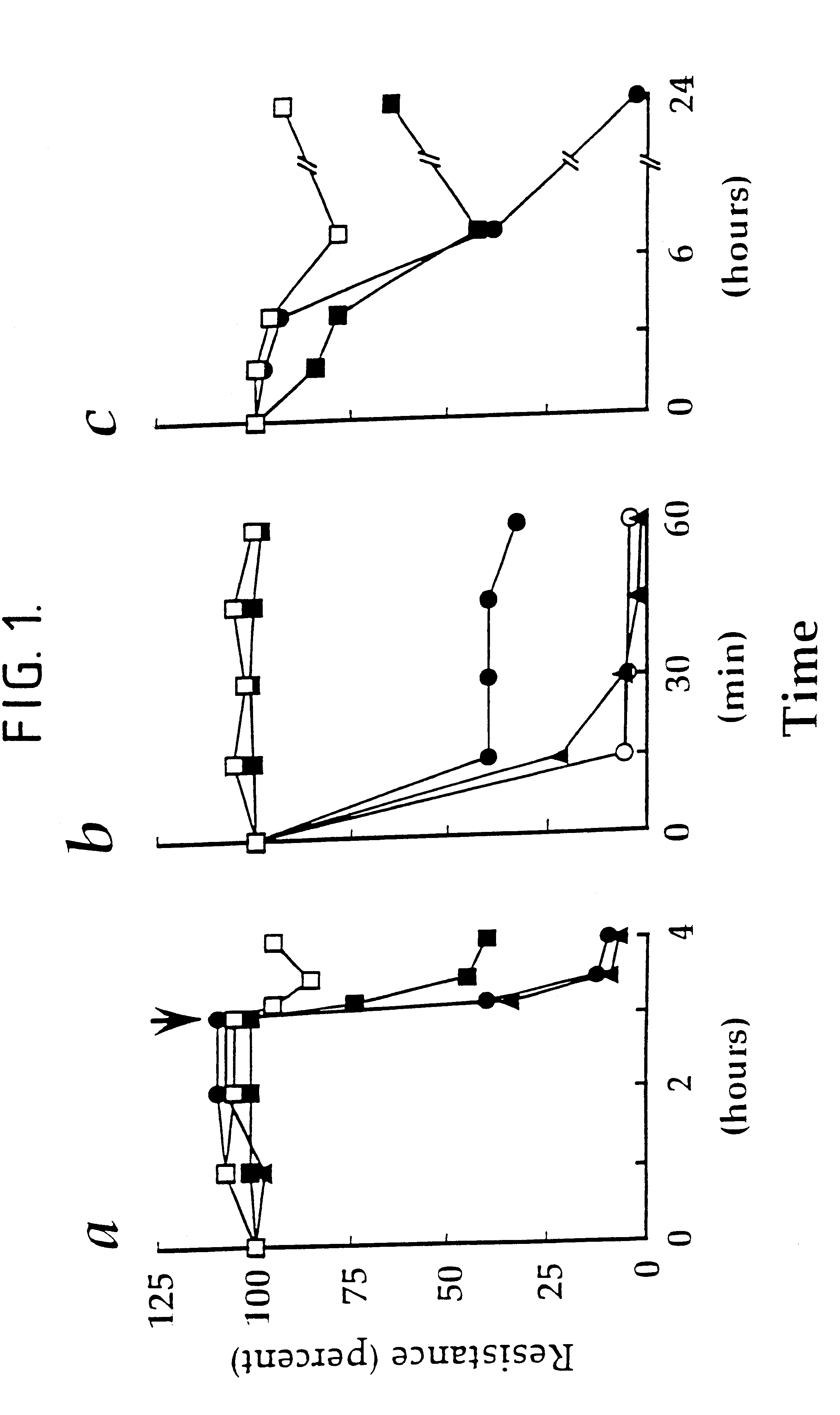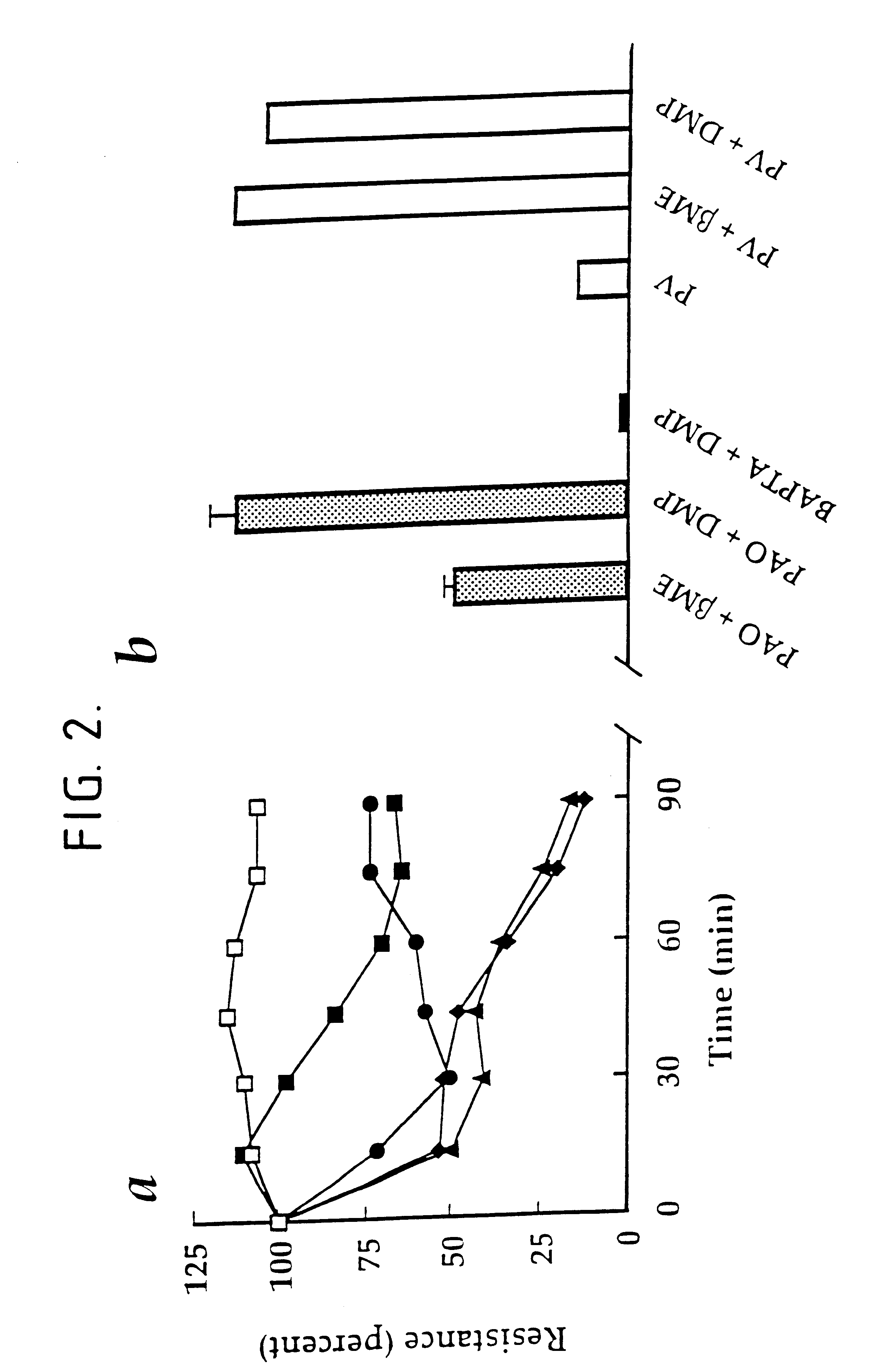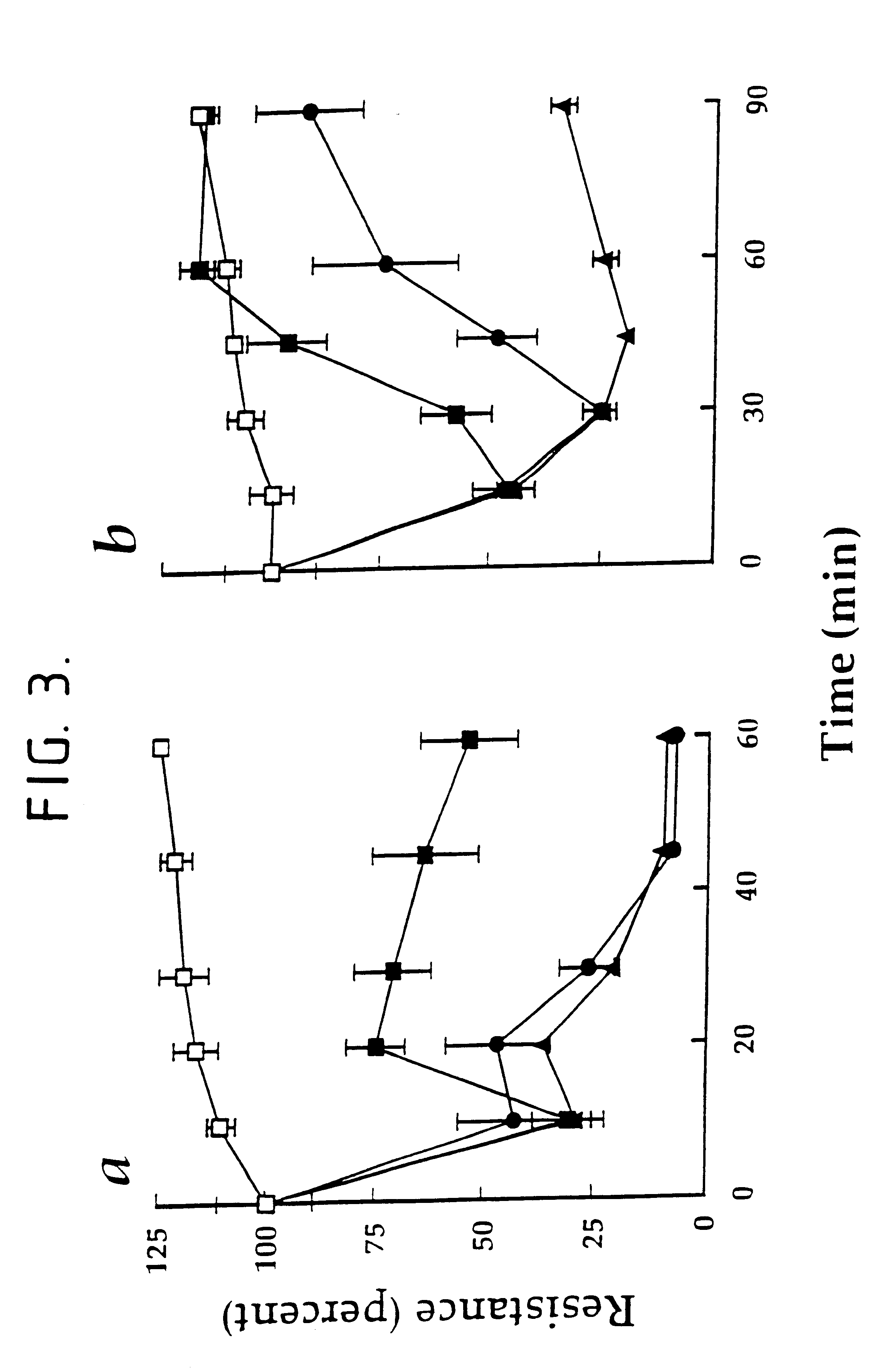Modulating the permeability of a physiological barrier with an agent that modulates tyrosine phosphorylation
a technology of tyrosine phosphorylation and physiological barrier, which is applied in the field of modulating the permeability of a physiological barrier with an agent that, to achieve the effect of increasing the tyrosine phosphorylation of proteins
- Summary
- Abstract
- Description
- Claims
- Application Information
AI Technical Summary
Benefits of technology
Problems solved by technology
Method used
Image
Examples
example 1
Pervanadate decreases the transcellular electrical resistance of MDCKI cells. Strain I MDCK cells were grown on 6.5 mm, 0.4 .mu.m pore, TRANSWELL.TM. filters (Costar Catalogue No. 3413). The cells were plated at 10.sup.5 per filter and incubated for 4-7 days at 37.degree. C. in a humidified 5% CO.sub.2 incubator. Under these conditions the strain I MDCK cells gave transcellular electrical resistance values of 2000-5000 .OMEGA.-cm.sup.2. In the experiment whose results are shown graphically in FIG. 1a, vanadate was added (as the sodium salt pH7), to a final concentration of 0.01 mM (.box-solid.) 0.1 mM (.circle-solid.) or 10 mM (.tangle-solidup.) Transcellular electrical resistance (TER) was measured, with respect to control cells (.quadrature.), using the MILLICELL-ERS.TM. system from Millipore (UK) Limited at the times indicated. After 3 hours, H.sub.2 O.sub.2 was added to a final concentration of 2 mM (arrow). In the experiment whose results are shown graphically in FIG. 1b, vanad...
example 2
Phenylarsine oxide decreases the transcellular electrical resistance of MDCK I Cells. Stain I MDCK cells were grown on TRANSWELL filters under the conditions described in Example 1. In the experiment whose results are shown graphically in FIG. 2a, phenylarsine oxide was added to a final concentration of 1 .mu.M (.box-solid.), 3 .mu.M (.circle-solid.), 10 .mu.M (.tangle-solidup.), or 30 .mu.M (.diamond-solid.) and the TER was expressed relative to the control cells (.quadrature.) . In the experiment whose results are shown graphically in FIG. 2b phenylarsine oxide (PAO) or BAPTA was added to a final concentration of 10 .mu.M and 3 mM, respectively, to cells that had been preincubated for 10 minutes with 200 .mu.M .beta.-mercapoethanol (.beta.ME) or 100 .mu.M 2,3-dimercaptopropranol (DMP). TER was determined 30 minutes later. The values shown are the mean .+-.S.D. of values derived from triplicate TRANSWELL filters, except for the BAPTA measurements which were the average of two filte...
example 3
Reversibility of the decrease in transcellular electrical resistance induced by the tyrosine phosophatase inhibitors. Strain I MDCK cells were grown as described in Example 1 on TRANSWELL filters. In the experiments whose results are shown in FIG. 3a, the cells were treated in the absence (.circle-solid.) or presence of 100 .mu.M pervanadate (.box-solid.,.tangle-solidup.,.circle-solid.) 2,3-Dimercaptopropanol (250 .mu.M) was added 10 min (.box-solid.) , 20 min (.tangle-solidup.) or 30 min (.circle-solid.) after pervanadate. TER was determined at the times indicated. In the experiment whose results are shown in FIG. 3b, the cells were treated in the absence (.quadrature.) or presence of 10 .mu.M phenylarsine oxide (.box-solid.,.circle-solid., .tangle-solidup.). Dimercaptopropanol 100 .mu.M) was added 15 min (.box-solid.), 30 min (.circle-solid.) or 45 min (.tangle-solidup.) after phenylarsine oxide. TER was determined at the times indicated. The values shown (means .+-.S.D. of tripli...
PUM
| Property | Measurement | Unit |
|---|---|---|
| pH | aaaaa | aaaaa |
| temperature | aaaaa | aaaaa |
| v/v | aaaaa | aaaaa |
Abstract
Description
Claims
Application Information
 Login to View More
Login to View More - R&D
- Intellectual Property
- Life Sciences
- Materials
- Tech Scout
- Unparalleled Data Quality
- Higher Quality Content
- 60% Fewer Hallucinations
Browse by: Latest US Patents, China's latest patents, Technical Efficacy Thesaurus, Application Domain, Technology Topic, Popular Technical Reports.
© 2025 PatSnap. All rights reserved.Legal|Privacy policy|Modern Slavery Act Transparency Statement|Sitemap|About US| Contact US: help@patsnap.com



